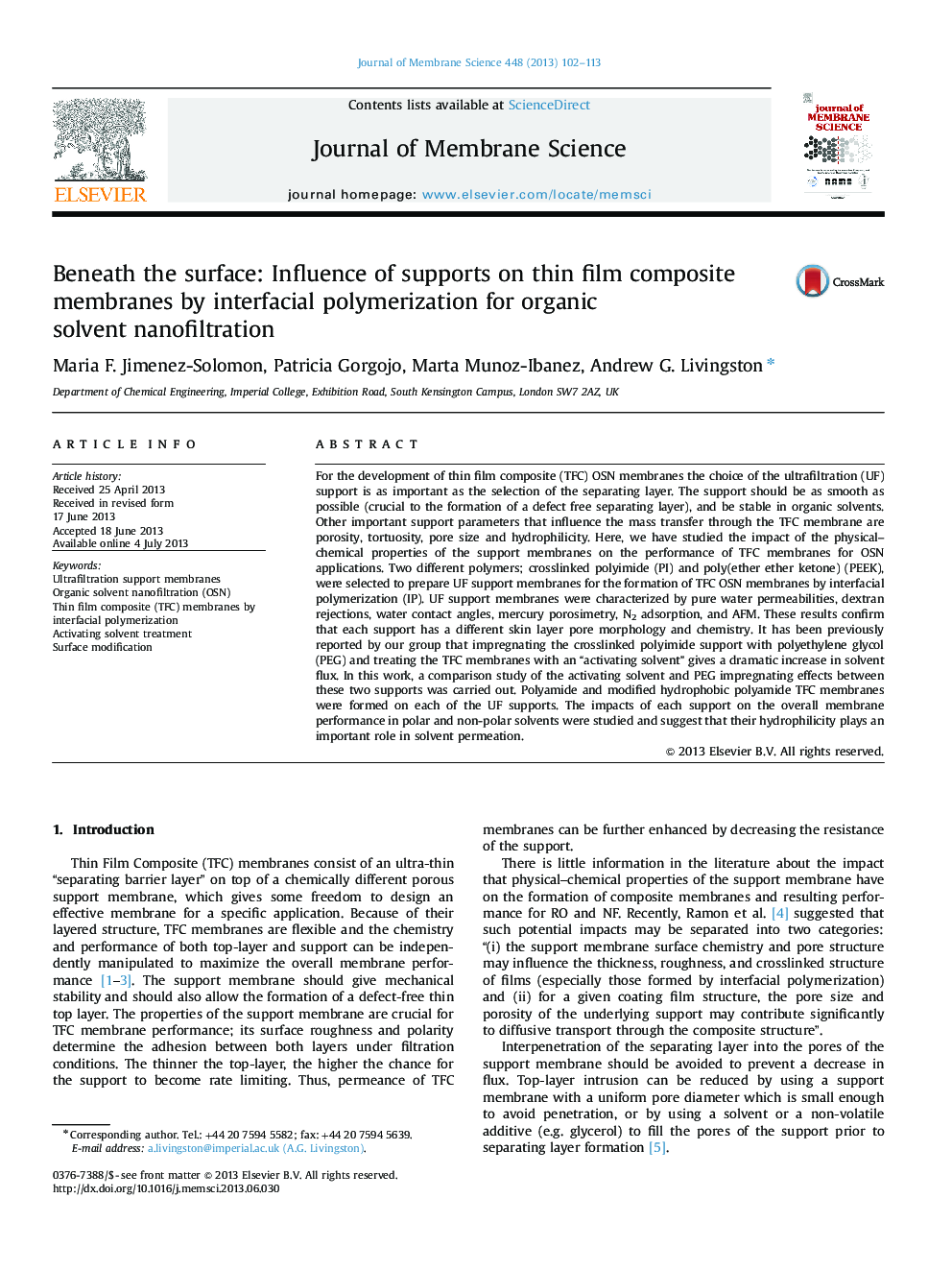| Article ID | Journal | Published Year | Pages | File Type |
|---|---|---|---|---|
| 634123 | Journal of Membrane Science | 2013 | 12 Pages |
•High flux TFC membranes were formed by interfacial polymerization on two different solvent stable UF supports.•Increased permeability by (a) adding PEG in the support; (b) post-treating the TFC membranes with an “activating solvent”.•Hydrophilicity of support membrane plays an important role on TFC membrane solvent permeation.•TFC membranes showed higher permeabilities than commercial OSN membranes without compromising rejection.
For the development of thin film composite (TFC) OSN membranes the choice of the ultrafiltration (UF) support is as important as the selection of the separating layer. The support should be as smooth as possible (crucial to the formation of a defect free separating layer), and be stable in organic solvents. Other important support parameters that influence the mass transfer through the TFC membrane are porosity, tortuosity, pore size and hydrophilicity. Here, we have studied the impact of the physical–chemical properties of the support membranes on the performance of TFC membranes for OSN applications. Two different polymers; crosslinked polyimide (PI) and poly(ether ether ketone) (PEEK), were selected to prepare UF support membranes for the formation of TFC OSN membranes by interfacial polymerization (IP). UF support membranes were characterized by pure water permeabilities, dextran rejections, water contact angles, mercury porosimetry, N2 adsorption, and AFM. These results confirm that each support has a different skin layer pore morphology and chemistry. It has been previously reported by our group that impregnating the crosslinked polyimide support with polyethylene glycol (PEG) and treating the TFC membranes with an “activating solvent” gives a dramatic increase in solvent flux. In this work, a comparison study of the activating solvent and PEG impregnating effects between these two supports was carried out. Polyamide and modified hydrophobic polyamide TFC membranes were formed on each of the UF supports. The impacts of each support on the overall membrane performance in polar and non-polar solvents were studied and suggest that their hydrophilicity plays an important role in solvent permeation.
